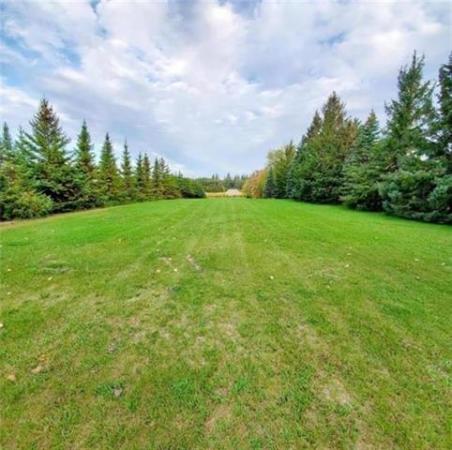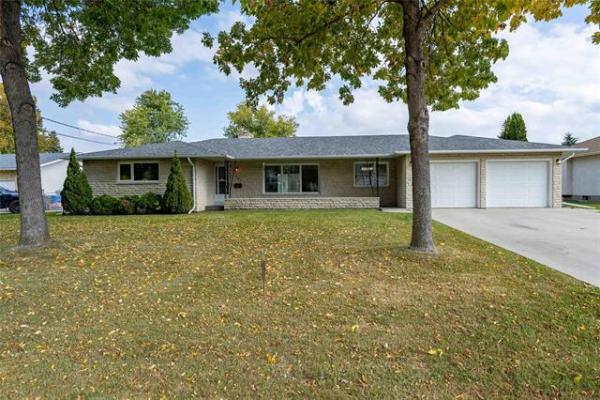Question: I have a problem with the stucco on my house breaking away where the wall meets the foundation. This house is a four-level split and was built in 1981. Originally, the stucco extended all the way to the ground, with the coloured stucco ending at the foundation and grey stucco covering the concrete foundation.
The grey stucco has fallen off completely, leaving the bottom edge of the buffalo board exposed.
The same problem exists on my detached garage as well. I notice stucco extending to the ground is the common practice here in Winnipeg, but isn't this asking for moisture to be wicked up into the stucco? I am concerned the exposed board will get damaged by moisture, as well as rotting the sill plate, or be a path for insect infestation. When winter comes, I can expect snow to be drifting up against the wall.
A friend had the same problem and had a rotting sill plate that had to be replaced, and carpenter ants had started working at the wood, leaving large mounds of sawdust.
Searching online shows some contractors swearing by installing a weep screed at the bottom of the wood/stucco, and some recommendations specify having at least 20 centimetres of clearance from grade to any stucco. What is the best way to seal the bottom edge of the stucco on the wall, and should there be stucco on the concrete foundation? Randall Wiebe-Dembowski
Answer: Most typical homes the age of yours will have little concern with the purely cosmetic, stucco-like parging on the foundation walls coming off, but yours may be quite different due to the style. Sealing a small crack where the stucco has deteriorated at the top of a foundation is easily accomplished, but may be markedly different on a split-level home. I will outline the differences and suggest repairs for both typical and low-height foundations.
Developing a small crack or gap at the bottom of a typical stucco wall, just over top of the foundation, is quite normal. This often occurs because the stucco wire cannot be easily secured to the concrete foundation and may crack or fall off due to movement and differential shrinkage between the concrete foundation and wooden house walls.
These types of cracks are rarely a sign of any significant issue and can normally be filled or sealed with exterior-grade caulking or stucco-patching material. The caulking will prevent moisture from entering the gap, preventing damage to the sheathing below. Care should be taken not to totally fill this gap if it is underneath the bottom of the stucco, as this small space may allow excess moisture that penetrates the stucco during heavy rains to drain. Filling that type of gap fairly well should prevent excessive pest and moisture intrusion.
The problem with many split-level homes is due to the different heights of the foundation or floor levels in different areas of the building. Unlike a standard bungalow or two-storey home, where the foundation is poured to a single, common height above grade, your home's foundation may have several different heights. Often, parts of the lower-level foundation will be framed with a wooden knee-wall to even things out or support one level of the floor joists. The problem is the bottom of this knee-wall may be near of just slightly above grade. If this is the area of concern in your home, more involved repairs are likely.
The problem with the knee-wall style of design, or if the floor joists themselves are sitting in or on the foundation just above grade, is potential moisture damage. As you have pointed out, this area will be subject to rot and decay from excessive wetting from melting snow or damp soil. I am not surprised your friend's home had this problem occur, which I have seen numerous times in that situation.
The key in determining if you need more involved repairs or simple caulking is the height above grade. Any siding materials, and the wall sheathing beneath, should be a minimum of 20 cm above grade, as you have discovered online. That much room will allow for good drainage after a heavy rain, prevent wicking of moisture from the soil or a wet concrete foundation and prevent snow from sitting against the wall when the spring melt begins. Any lower than that and moisture damage to the siding, sheathing, or wall and floor framing is likely.
If you discover that the true stucco walls are close to grade on your home, and not just a concrete foundation covered with parging that mimics the stucco in appearance, more invasive repairs should be done.
The only way to prevent the occurrence of the issue in your friend's home is to waterproof this area much better than originally done. Cutting away a few centimetres of stucco and building paper, to allow the required 20-cm minimum clearance, should expose the sheathing beneath. If visible rot is seen in the sheathing or framing, that must be removed and replaced before continuing.
If it is still in satisfactory condition, it should be waterproofed completely with a bitumen-based membrane or other protective coating. These materials are normally used for foundations, but may be just as effective in your application.
Once applied, the membrane should be covered with moisture-resistant sheathing, parging or other covering to prevent damage. The underside of the cut stucco can be capped with a galvanized metal J-channel, or other trim, to improve appearance and allow the waterproofing membrane to be installed under the bottom of this area for maximum protection.
You are absolutely correct that the practice of installing stucco close to grade on older split-level homes can cause moisture damage to the walls and floor structure. This may only appear after several decades, due to settlement and replacement of eroded soil, or may have started shortly after construction, and preventive measures should be installed. Simple patching or caulking of any cracks or gaps may be fine if the walls are sufficiently above grade to prevent serious moisture damage, but more extensive waterproofing will be warranted if it is too close to the ground.
Ari Marantz is the owner of Trained Eye Home Inspection Ltd. and the past president of the Canadian Association of Home & Property Inspectors -- Manitoba (cahpi.mb.ca). Questions can be emailed to the address below. Ari can be reached at 204-291-5358 or check out his website at trainedeye.ca.
trainedeye@iname.com



